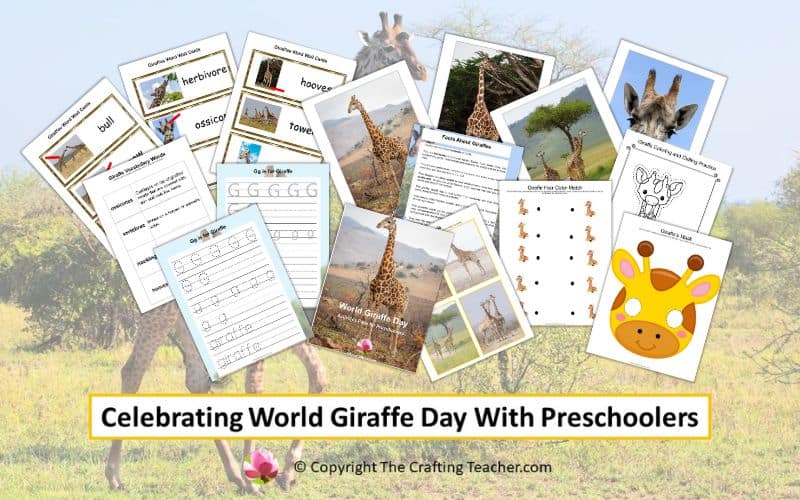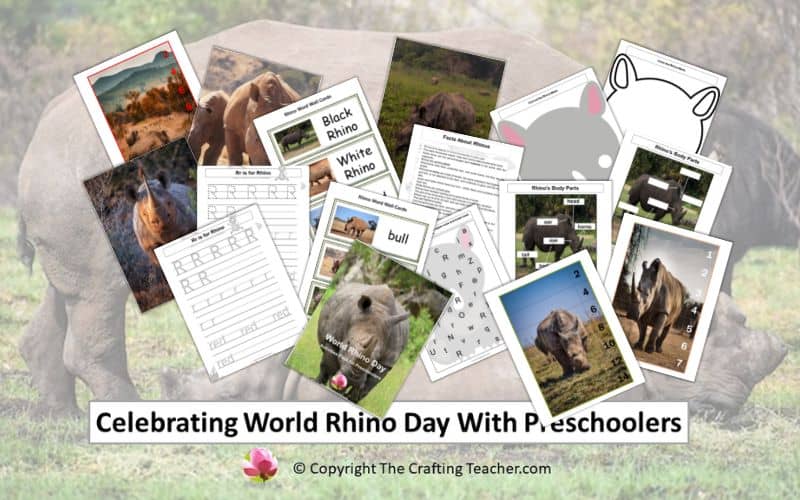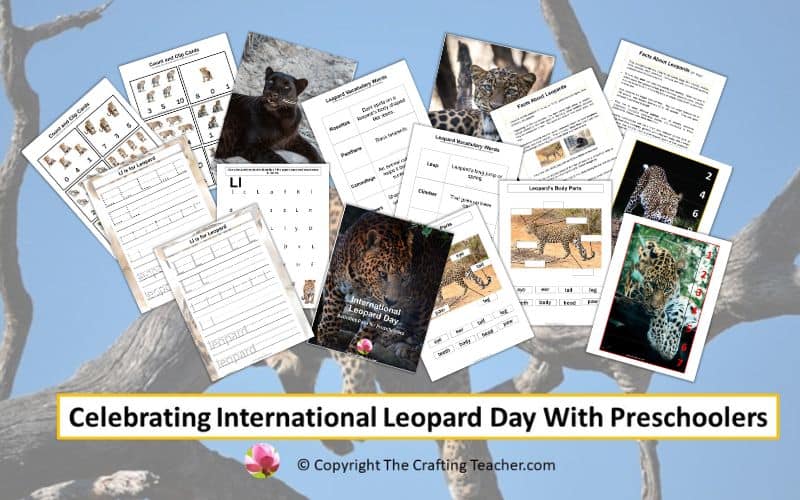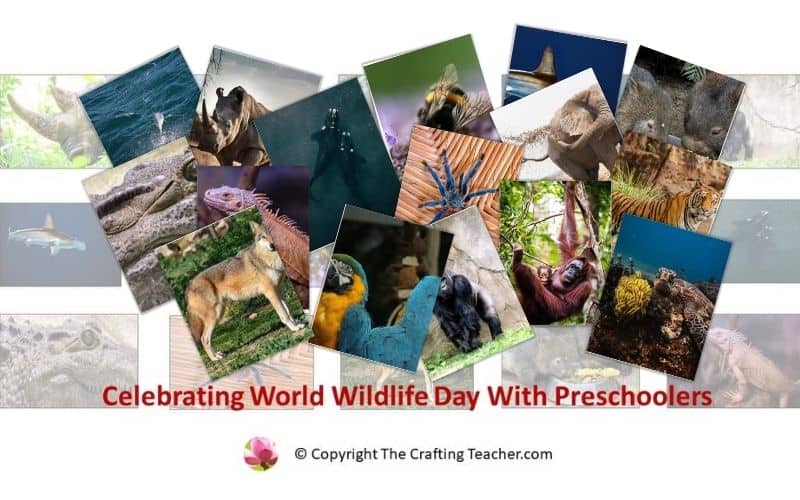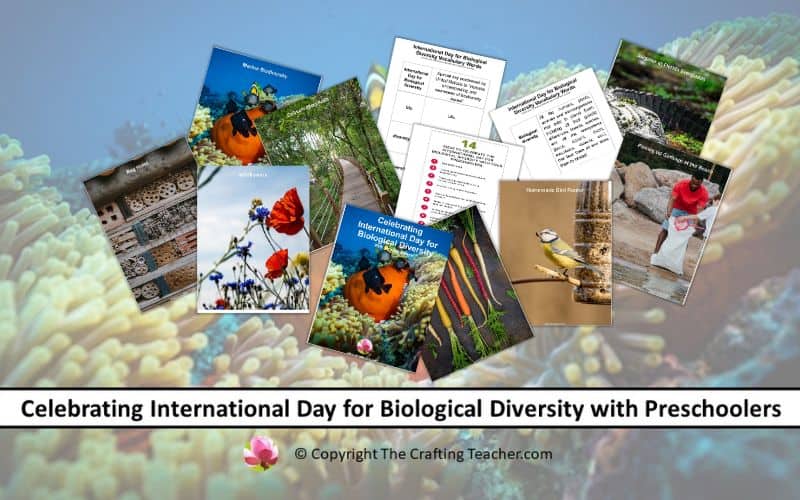Celebrating World Giraffe Day with Preschoolers
Affiliate Disclosure: “This post contains affiliate links, which means I receive a small commission, at no extra cost, if you make a purchase using those links.”
World Giraffe Day is celebrated worldwide on June 21 to raise awareness of these gentle giants’ threats, advocate for their protection, and prevent their extinction.
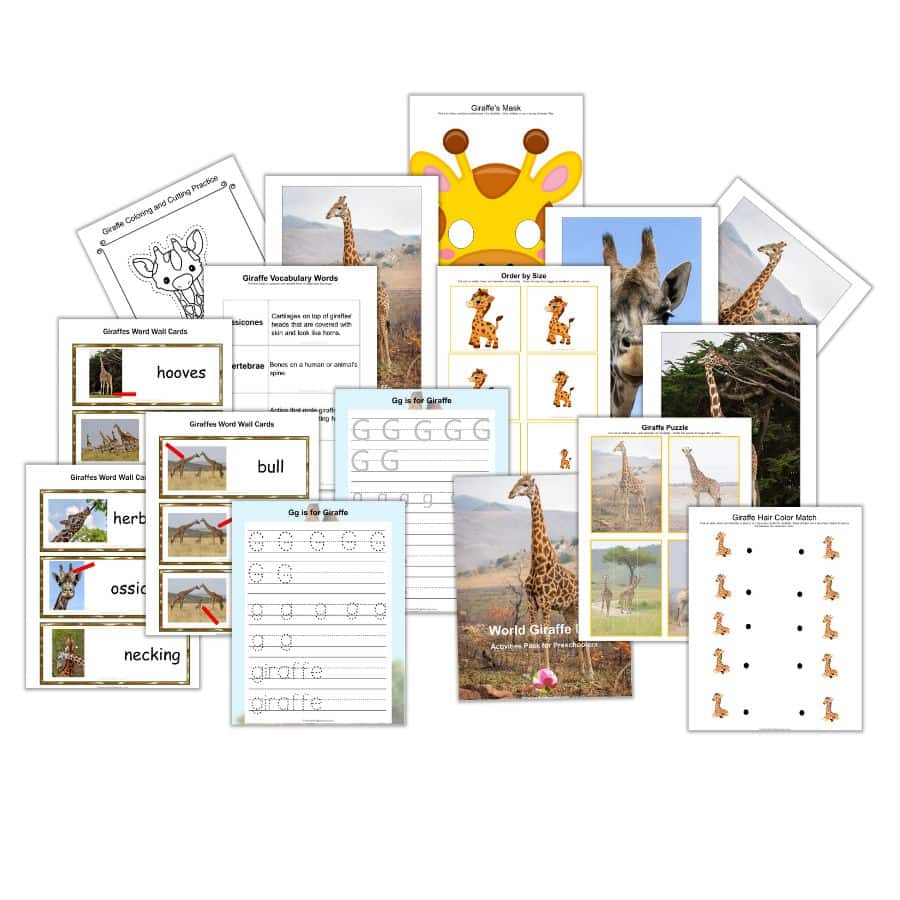
I’ve created a FREE World Giraffe Day pack to help you celebrate this day with your preschoolers. It includes 27 Literacy, Science, Math, and Fine Motor activities pages. You can download it at the end of this post.
History of World Giraffe Day
This day was initiated by the Giraffe Conservation Foundation (GCF) in 2014. It has been supported by global institutions organizing events to spread the word about giraffes’ possible extinction, educate people on ways to protect them, and raise funds to support their work and conservation efforts.
Today, zoos, parks, and other organizations in many countries, especially in the West, organize different activities to celebrate this day. These include opportunities to visit real giraffes and hear expert giraffe keepers talk about their characteristics, the importance of healthy habitats, and how they live in captivity and the wild.
How to Celebrate World Giraffe Day
You could do several things to celebrate this important day on a personal level and with your preschoolers. Some ideas I can give you are:
- Learn about them. As I always say, you cannot teach what you don’t know. Getting to know giraffes will allow you to teach others about them.
- Download, print, and laminate giraffe photos or posters and hang them on the walls. Use them to talk to the children (and parents) about giraffes while decorating your classroom or home school area.
- Create a lesson plan to teach your preschoolers about giraffes and their importance in a balanced ecosystem. Instill in them a love for these majestic animals and a desire to become their defenders.
- Introduce giraffes by bringing a stuffed or plastic one to the center of your circle time area. Encourage your preschoolers to talk about what they know by asking questions. You can include a Venn Diagram you can build upon during the theme’s development.
- Have a giraffe hunt. Gather multiple giraffe figurines or print and laminate pictures, hide them throughout your classroom or playground, and invite the children to search for them.
- Play “Follow the Giraffe” like you would “Follow the Leader.” You or one of the children can play the giraffe part, and the rest must follow the rhythm and reproduce the actions.
- Set a blue blanket on the floor in the Dramatic Play area to represent a river. Add plastic or genuine bushes and maybe giraffe masks or crowns. Invite the children to pretend to be giraffes.
- Play “Zebra, Zebra, Giraffe” like you would “Duck, Duck, Goose.” Select a child who will pretend to be a giraffe. The giraffe chases the other children until he touches one. The child touched by the giraffe becomes the giraffe for the next round.
- Introduce or review the letter Gg for giraffe, and have them trace it using crayons, markers, or pencils.
- Have them organize toy giraffes and pictures by size, from bigger to smaller, and vice versa.
- Have them sort animals by type (jungle, farm, insects, and ocean life)
- Invite children to put together giraffe puzzles.
- Organize a fundraiser at your school or with your friends to donate to organizations protecting these animals, such as the African Wildlife Foundation and the Giraffe Conservation Foundation (GCF). Even small amounts go a long way to help their effort to save the world’s giraffe population.
- Have your preschoolers do giraffe crafts. You can find some at these websites: Artsy Craftsy Mom, Styles at Life, DIY Candy, Best Toys 4 Toddlers, and Education Outside.
- Invite your preschoolers to dress as giraffes or with giraffe-inspired clothes on World Giraffe Day, and have a parade around the school or your neighborhood. You can find some on Amazon like this dress, this costume, this set of shorts and shirt, or this t-shirt.
- Have the children measure a giraffe’s neck. Provide six 12-inch (one-foot) rulers or pieces of paper, and invite them to place them on the floor, one ruler or paper behind another, and to add blocks or another type of toy on top until they cover all the rulers or pieces of paper.
- Join the San Diego Zoo on Tuesday, June 21, to celebrate World Giraffe Day and invite others to do the same. This zoo will offer interactive experiences, insights from wildlife care specialists, and fun surprises for the whole family.
- Invite your preschoolers’ parents, family, and friends to use their social media platform to promote the protection of giraffes, taking part in the social media campaign run by the Giraffe Conservation Foundation (GCF) every World Giraffe Day.
- Organize a field trip to your local zoo to observe the giraffes, or at least invite your families to go on their own and do the same.
- Show your preschoolers videos about giraffes in their natural habitats. YouTube has some good ones you can use, such as Giraffe 101 from Nat Geo Wild, Giraffes by Free School, and Amazing Giraffe Facts You Need to Know!
Facts About Giraffes
- Giraffes are the tallest mammals on Earth.
- They are herbivores and only eat leaves, flowers, fruits, seeds, vines, and occasionally grass. Their favorite food sources are the acacia and mimosa trees.
- They are also pollinators, transferring the pollen that sticks to their bodies when they eat from one tree to the next.
- Their tongues are bluish-purple, which protects them from sunburn. They can grow up to 53cm in length and twist and grip the leaves and buds in the treetops.
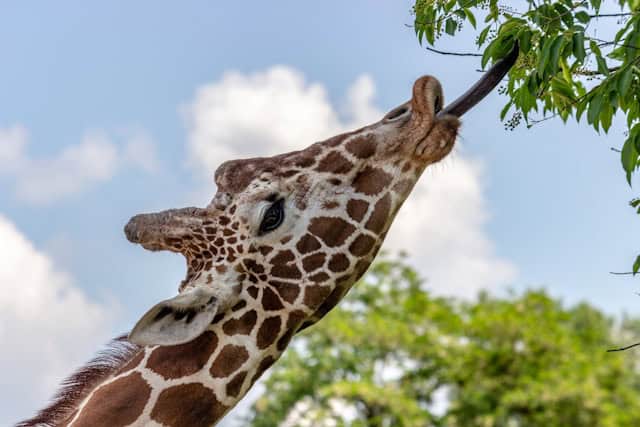
- The giraffe’s mouth has a hard surface that, combined with its thick saliva, protects it from sharp thorns.
- They bellow, making flute-like sounds and many other sounds impossible for humans to hear.
- Their mighty hearts are the biggest of any land animal, around 2 feet long, and pump about 60 liters of blood. They are also the heaviest hard of all land animals after the elephant, weighing about 25 pounds.
- They have big eyes with long eyelashes.
- Most giraffes have two covered with skin on top of their heads that look like horns, called ossicones cartilages, but the Northern Giraffe has three. This giraffe is also known as the three-horned giraffe.
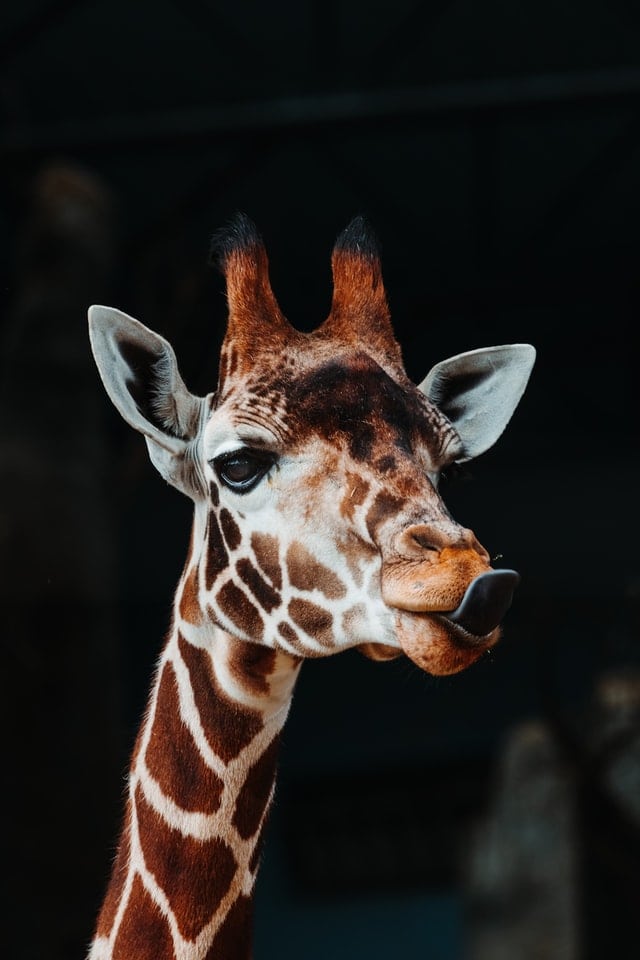
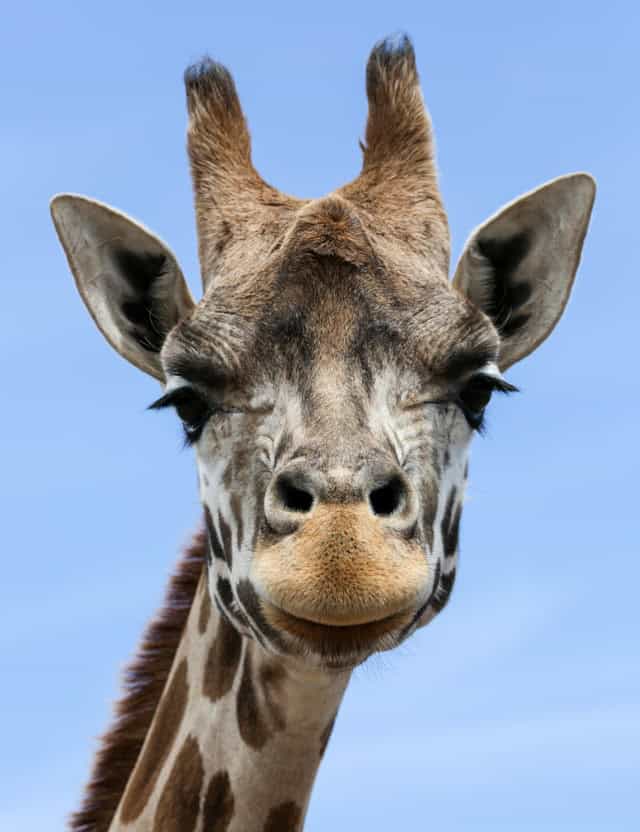
- They get most of their water from the type of food they eat and only need to drink once every few days, spreading their legs or kneeling to be able to reach the ground.
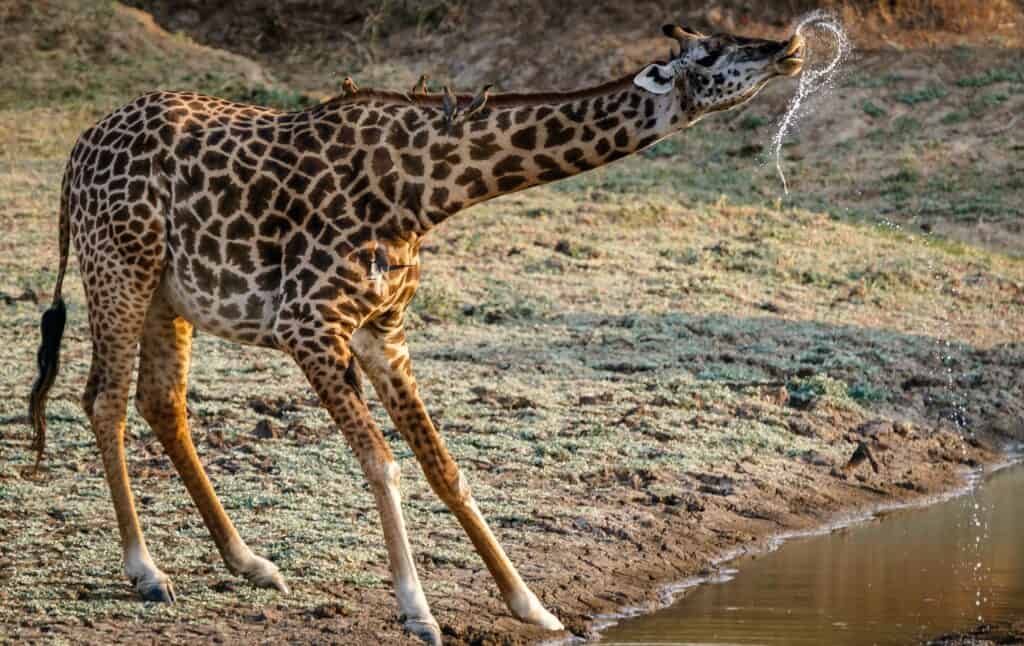
- Their necks are 6 feet long, weigh about 600 pounds, and have seven vertebrae, just like humans.
- Male giraffes fight, swinging their necks and butting heads. This is known as necking.
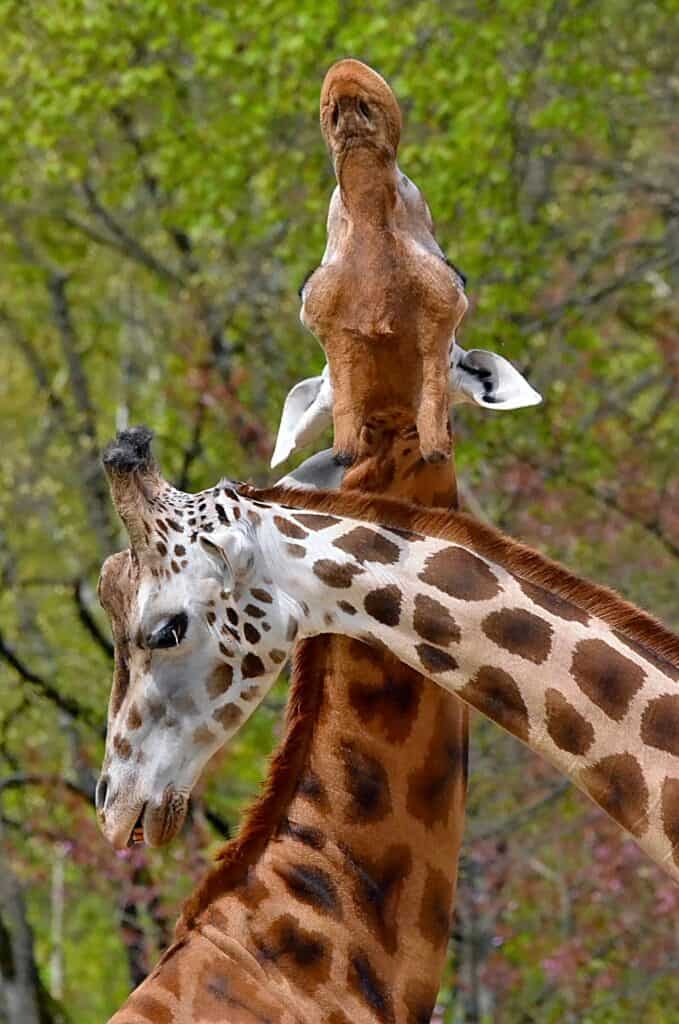
- Giraffes can run up to 35 miles per hour over short distances and 10 miles per hour over long distances.
- Their legs are about 6 feet long, and their kick is so powerful that they can kill a lion with just one kick.
- They walk in a very unusual way, moving both legs on one side of their body and then both legs on the other, but running swinging their rear legs and front legs at the same time.
- They stand up almost all the time, and their feet, called hooves, are the size of dinner plates, which helps giraffes keep their balance despite being so tall.
- Giraffes have the most extended tail of any mammal, up to 8 feet long.
- Giraffes are the planet’s tallest and third heaviest animals (after elephants and rhinos). Adult males can grow 18 feet tall and weigh between 2,400 and 3,000 pounds, while females can grow up to 14 feet tall and weigh between 1,600 and 2,600 pounds.
- They live in Africa’s dry savannahs, grasslands, and open forests, especially in reserves such as the Serengeti National Park and the Amboseli National Park. Some are also found in the reserves of Southern Africa. They cover long stretches of land, looking for food.
- Four distinct species exist: The Masai, Southern, Northern, and Reticulated giraffes.
- Masai giraffes live in Southern Kenya and Tanzania.
- Northern giraffes live in the north of Africa, Kenya, and southwestern Ethiopia. This species includes three subspecies: the Nubian, the Kordofan, and the West African giraffes.
- Southern giraffes are in the south of the continent, in Mozambique, Namibia, and Angola. This species has two subspecies: the Angolan and the South African giraffes.
- Reticulated or Somali giraffes living in the east, in Somalia, Ethiopia, and Kenya.
- Giraffes have spots on their bodies that serve as camouflage and dissipate the heat radiated by the sun in their dry environment. Each giraffe’s spots are organized in unique patterns, such as fingerprints, and vary according to the species.
- The spots on the Masai giraffes are darker, with brown lines between their patches; the ones in the Reticulated giraffes are brown-orange, separated by thick white lines, and the ones in the northern and southern giraffes are like splurges of paint.
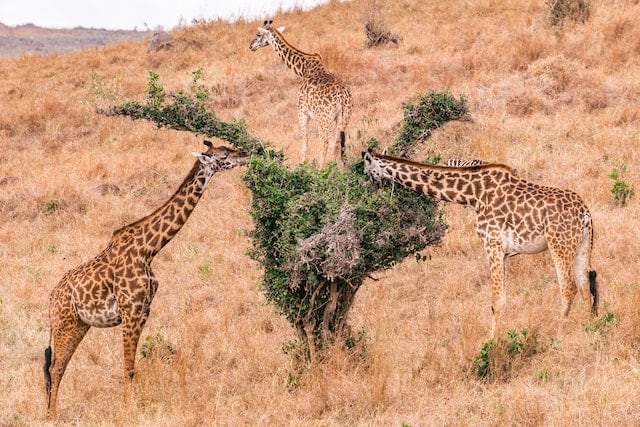
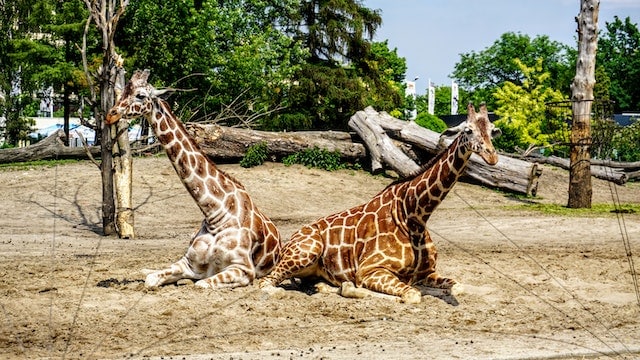
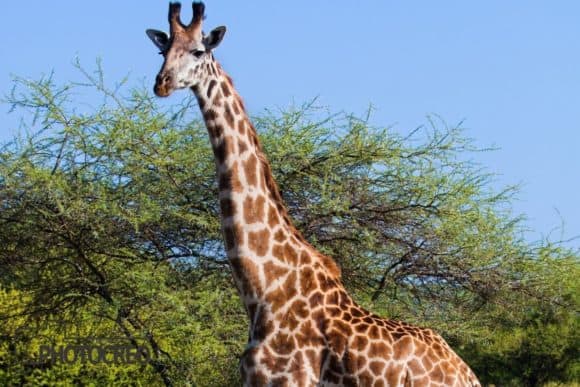
- Giraffes don’t sleep much, only 5 to 30 minutes daily.
- It is expected to see zebras and other savannah animals grazing with giraffes. Scientists believe they do this to protect themselves since giraffes’ height allows them to spot predators easily.
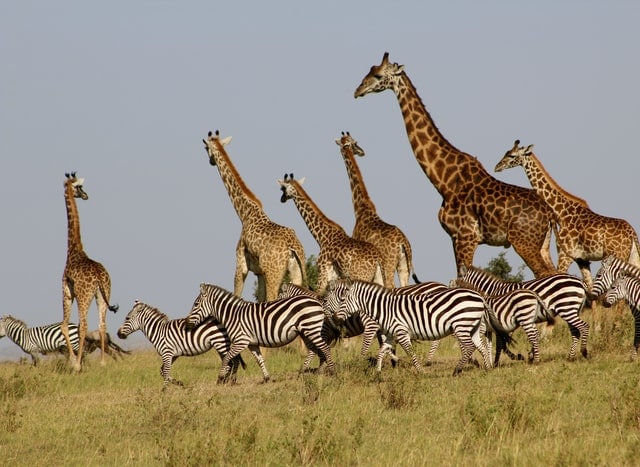
- Giraffes are peaceful, very social animals that live in large groups called towers. They include an adult male leader, females, calves, and young males.
- An adult male giraffe is called a bull, an adult female is called a cow, and a baby is called a calf.
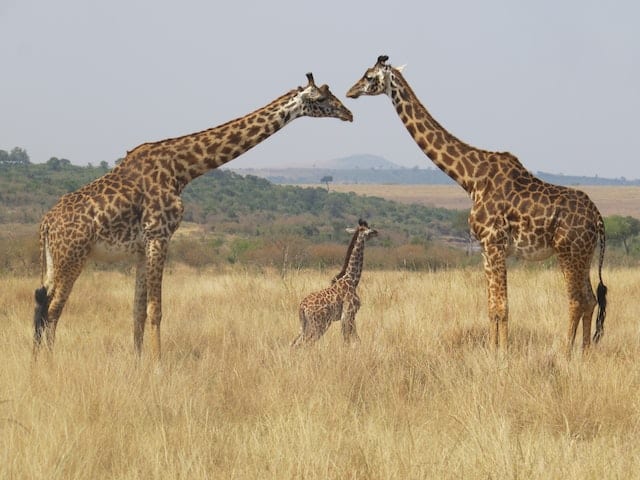
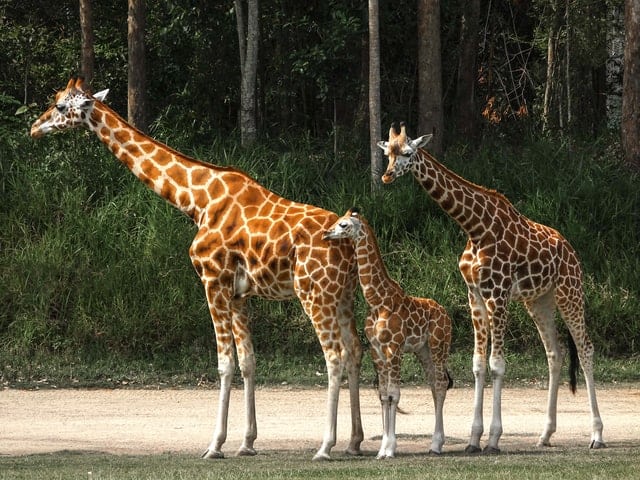
- Giraffes give birth standing up, and the calf falls almost 2 meters to the ground. At birth, the calf weighs around 100 pounds, is close to 3 feet tall, can stand after 30 minutes to an hour of being born, and runs after just 10 hours.
- In the wild, they usually live up to around 25 years, and in captivity, up to 40 years.
- The International Union for Conservation of Nature (IUCN) has declared giraffes vulnerable as a species due to hunting, habitat loss by agricultural expansion, deforestation and fragmentation, diseases, environmental changes, and electrocution from electrical lines.
- At least seven African nations have already declared the giraffe extinct. The Masai giraffes are classified as endangered. The Reticulated giraffes are critically endangered, with less than 11,000 adults in the wild. Two of the Northern giraffe subspecies, the Nubian and the Kordofan, are classified as critically endangered, and the Southern giraffe and the rest of the subspecies are classified as vulnerable.
Books About Giraffes
These are some of my favorite books about giraffes. If you don’t have any available, you can go to your local library or used book store and use my links on the titles to get them from Amazon quickly. Get as many as possible, read them to your preschoolers, and fill your library and centers.
- All Things Giraffe for Kids by Animal Reads includes amazing real-life images, facts, and topics ranging from their history, evolution, characteristics, diet, and life cycle to teach children about giraffes.
- Giraffes Can’t Dance by Giles Andreae is a touching tale about Gerald the giraffe, who wants to dance using his crooked knees and thin legs until he can. The book gently inspires every child with dreams of greatness using light-footed rhymes and high-stepping illustrations.
- How Do Giraffes Take Naps? by Diane Muldrow will teach children how giraffes nap.
- Giraffe, Giraffe by Brainie Buddie will reveal to the children surprising secrets and delightful details about giraffes, such as why giraffes sleep standing up, how their long necks help them thrive, and much more, using fun facts and charming illustrations.
- The Giraffe Who Found Its Spots by Adisan Books illustrates the important lesson of being happy with yourself for who you are and accepting others for their differences, using a young giraffe that goes on a journey of self-discovery.
- Rocket the Space Giraffe by Suzane Shepard is Inspired by a real giraffe named Rocket at the Gladys Porter Zoo in Brownsville, Texas. Using rhyming and beautiful illustrations, this book will take children on a space adventure that will remind them to never give up on their dreams.
- All About Giraffes by EDventure Learning introduces facts and photos of giraffes.
- Stay Close to Mama by Tony Buzeo this story uses lyrical text and enchanting illustrations to illustrate a mother’s love.
Pin It For Later
If you are in a rush and don’t have time to read the post and download the printable but want to save it, pin it to one of your Pinterest boards.

I invite you to create the desire to become defenders of these incredible mammals in your preschoolers and their families. There is still time to save them if we all work together.
I hope you enjoy these ideas and that they help you have fun with your preschoolers during the World Giraffe Day celebration. To get the FREE pack, click on the link below and enter your information for an immediate download.
Be happy, safe, and creative. I wish you well.
Love,

P.D. Please let me know if any of these ideas worked for you or if you think I need to add or replace something. My goal is to help you in any way I can.

